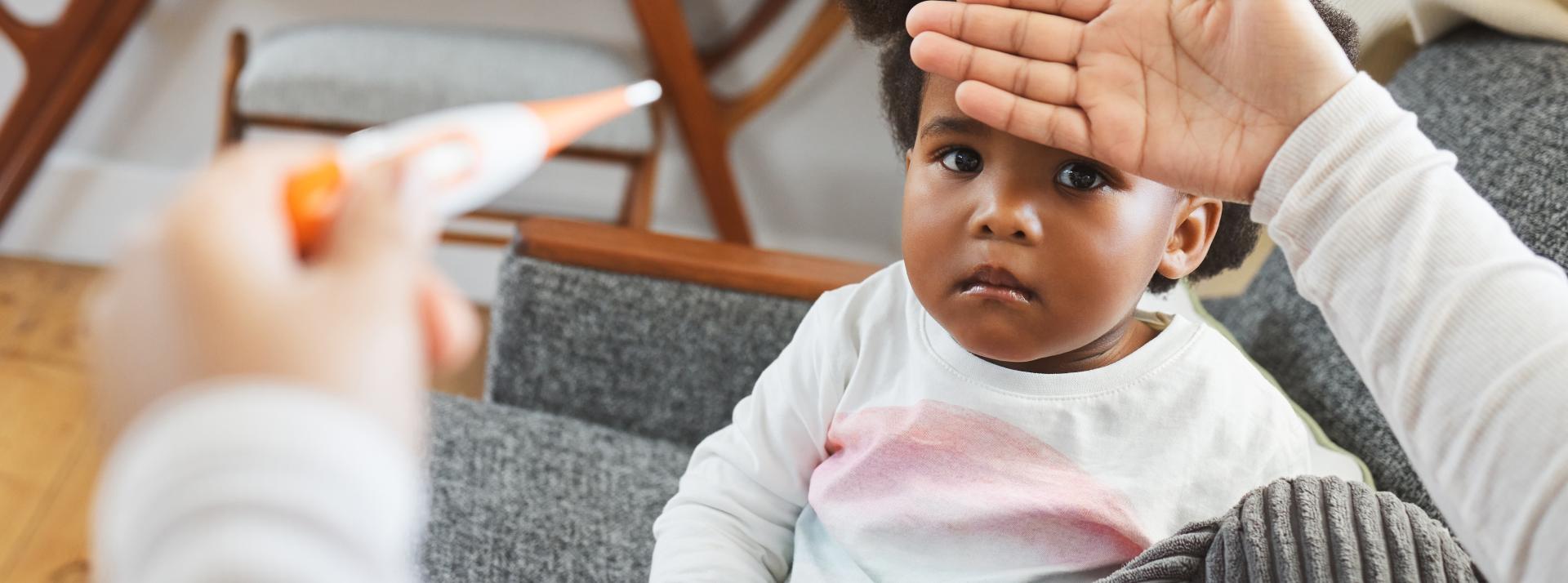Fever
Fever is very common in children. It is usually caused by an infection, but it may also be caused by some other illness.
Parents cannot tell how serious an illness is by how high the fever is. A child with a mild infection could have a very high fever, while a child with a severe infection might have no fever. The way a child acts or behaves is a more important sign. If you’re worried about your child’s behaviour, call your doctor.
Check for fever by taking the child’s temperature in the mouth, ear or under the arm. A child has a fever when the temperature is 38.5°C or higher.
Treatment
Bring down your child's fever
The following steps can help bring the fever down and make the child more comfortable:
- Keep clothing light, such as a T-shirt and shorts or diaper, and keep room below 22º C.
- If the child has a temperature of 38.5°C or higher, sponge baths with a washcloth soaked in cool, not cold, water can help reduce the fever. Check temperature every 4 hours.
- Offer your child plenty of fluids to prevent dehydration. Acetaminophen or Ibuprofen may be given up to 5 times in 24 hours.
When to call your doctor or 811
- has a fever and is less than six months old
- has a fever for more than 72 hours
- is excessively cranky, fussy or irritable
- is unusually sleepy, listless or does not respond
- has difficulty breathing
- has a fever and a rash or any other signs of illness that concern you
When the fever is gone and your child feels well enough to participate in activities, he or she can go to school or the childcare centre.
How to take your child's temperature
The suitable method for children depends on the child’s age. For older children and teenagers, use the adult method. Write the temperature down so you can tell the doctor.
Birth to 2 years of age: The best method is by armpit
2 to 5 years of age: The best method is through the ear and then the armpit.
Five years to adults: The best method is through the mouth, next is the ear, and then the armpit.
Taking temperature by mouth
- Place the tip of the thermometer under the tongue and close your mouth.
- Do not bite down on the thermometer.
- Do not let a child drink hot or cold liquids for half an hour before taking a temperature.
Taking temperature by ear
An ear thermometer may give a temperature reading lower than your child’s actual temperature.
- Use a clean probe tip each time and follow the manufacturer’s instructions very carefully.
- Gently tug on the ear, pulling it back and up. This will straighten the ear canal and make a clear path from the inside of the ear to the eardrum.
- Gently insert the thermometer until the ear canal is entirely sealed off.
- Squeeze and hold the button down for one second.
Remove the thermometer and read the temperature.
Taking temperature by armpit
- Place the tip of the thermometer against the skin and hold the arm snugly against the chest for 5 minutes or until the thermometer beeps.
If you don’t have a thermometer, you can tell if someone has a fever by touching his or her skin. They may have a fever if:
- the person’s skin is hot and dry
- they have the “chills.”
- mouth and lips are dry
- cheeks are flushed
Resources
-
-
Fever or chills, aged 12 and older
Information by HealthLinkBC
-
Fever or chills, age 11 and younger
Information by HealthLinkBC
-



